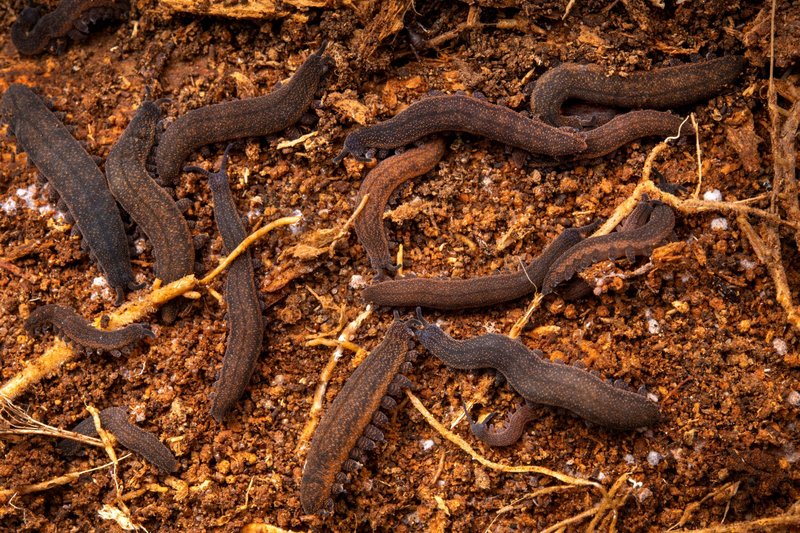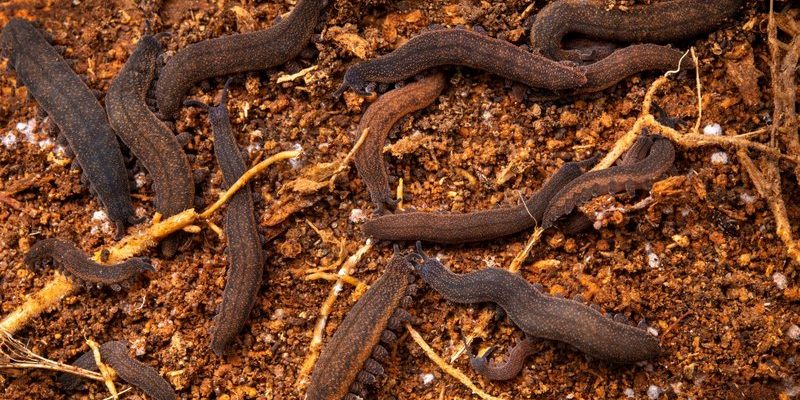
Velvet worms, or *Onychophora* as they’re known scientifically, thrive in humid, tropical environments, often in leaf litter or under rocks. Picture a tiny, worm-like animal that’s not quite a worm, not quite an insect, but something in between—this is what makes them so intriguing. In this blog post, we’re going to explore how these unique creatures use camouflage to survive and thrive in their habitats. So, grab your coffee, and let’s dig into the world of velvet worms!
What Are Velvet Worms?
Velvet worms look like something out of a storybook. They have soft, velvety bodies covered in tiny projections called papillae, which make them appear fuzzy. These little critters can grow up to 15 centimeters long and come in various colors, from earthy browns to bright greens. Their body structure is segmented, similar to that of insects, but they are more closely related to slugs and snails.
So why should we care about these little beings? Well, they play an essential role in their ecosystem. Velvet worms are predatory, feeding on small insects and other invertebrates. They catch their prey by shooting a sticky slime from specialized glands—think of it as their version of a spider’s web. Their unique appearance, combined with their fascinating hunting technique, makes them a true marvel of the natural world.
Natural Camouflage: A Survival Strategy
Camouflage is vital for many animals, but velvet worms take it to a whole new level. Their primary strategy is to blend seamlessly into their surroundings. This helps them avoid becoming a meal themselves. Imagine trying to hide in a busy café; you’d wear something to blend in with the crowd, right? Velvet worms do something similar, only they do it with nature.
Why is camouflage so important? For velvet worms, it’s a matter of life and death. By mixing in with the leaf litter or bark, they can avoid predators. Birds, frogs, and other larger animals are always on the lookout for a snack, and if a velvet worm can make itself less visible, it stands a better chance of survival. This remarkable adaptation is a fantastic example of how animals evolve to protect themselves.
How Camouflage Works for Velvet Worms
So, how exactly do velvet worms pull off this impressive camouflage? It’s all about **coloration** and **texture**. The color of their skin usually matches the browns and greens of their habitat. By being the same color as the leaves and soil around them, they become practically invisible.
But it’s not just about color; it’s also about texture. The soft, velvety surface of their bodies helps them blend in with the rough textures of the forest floor. This is a neat trick that many animals use. Think about a stone that has moss growing on it. The moss gives the stone a textured look, allowing it to blend into the environment. Similarly, velvet worms use their texture to enhance their disguise.
Behavioral Adaptations for Camouflage
Camouflage isn’t just about how they look; it’s also about how velvet worms behave. When they sense a predator nearby, they often stay very still. It’s like playing dead but with a sprinkle of patience. By remaining motionless, they’re harder to detect. This behavior is crucial because even the slightest movement can catch an eye.
Additionally, velvet worms are mainly nocturnal. They come out at night when it’s dark and cool, which further enhances their chances of staying hidden during the day. This instinctive behavior plays a key role in their survival, as many of their natural predators are diurnal, or active during the day.
Comparison with Other Camouflaging Creatures
You might be wondering how velvet worms compare to other masters of disguise in the animal kingdom. Take the chameleon, for instance. Chameleons actively change their color based on their environment and mood, while velvet worms stick to a more static approach, using coloration and texture that’s already suited to their habitat.
Another great example is the stick insect, which literally looks like a twig. While stick insects mimic their environment to avoid detection, velvet worms rely more on passive camouflage. This means they’re not trying to transform but are already equipped for blending in naturally.
While both strategies are effective, velvet worms have a more laid-back approach. Instead of actively changing their appearance, they simply choose the right place to stay put. This strategy conserves energy and keeps them out of sight.
Why Camouflage Matters in Conservation
Understanding how velvet worms use camouflage can teach us about the importance of biodiversity and conservation. When we learn about these unique creatures, we can appreciate the complexity of ecosystems and the delicate balance needed to maintain them. If we lose habitats due to deforestation or climate change, it can threaten velvet worms and many other species that rely on camouflage for survival.
By spotlighting velvet worms and their camouflage skills, we can help raise awareness about the need to protect their environments. Every creature, no matter how small, plays a significant role in the ecosystem. The survival of velvet worms could tell us a lot about the health of our planet.
In conclusion, velvet worms might not be the first animals that pop into your head when you think about camouflage, but they’re definitely some of the most interesting. Their unique blend of coloration, texture, and behavior creates a remarkable defense mechanism that helps them thrive in the wild.
Whether they’re hiding in plain sight or waiting silently for their next meal, velvet worms remind us of the beautiful complexity of nature. So next time you hear about these fascinating creatures, hopefully, you’ll appreciate their camouflage skills a little more—and maybe even see them as nature’s own stealth ninjas!

